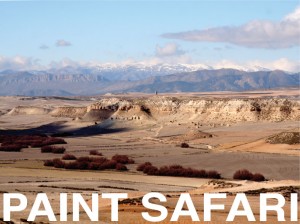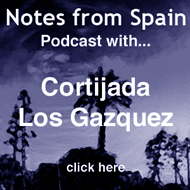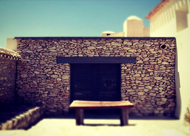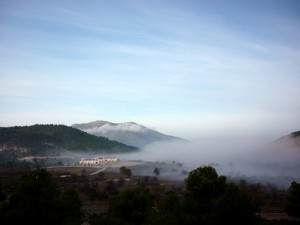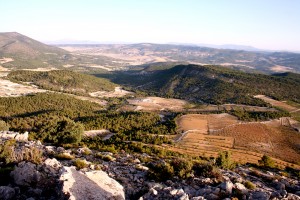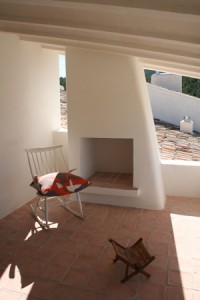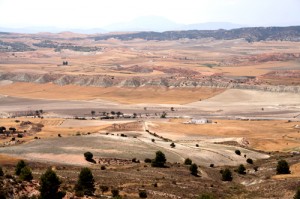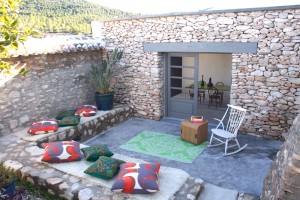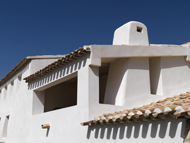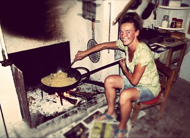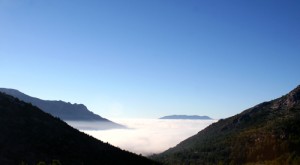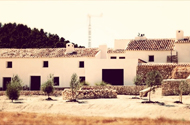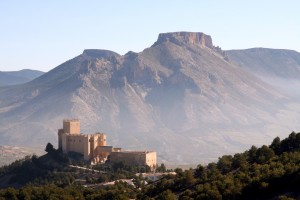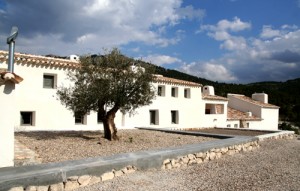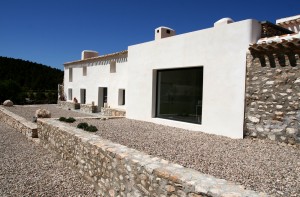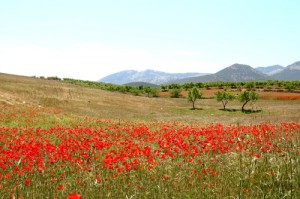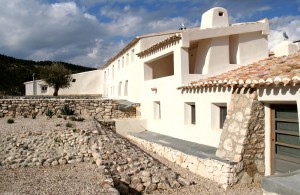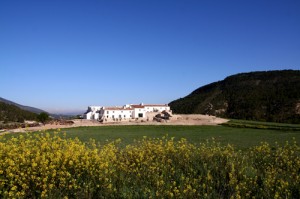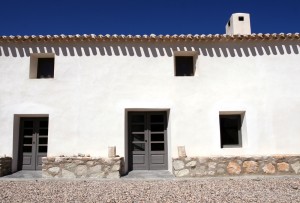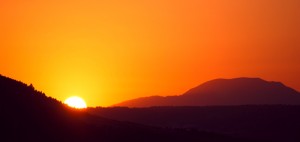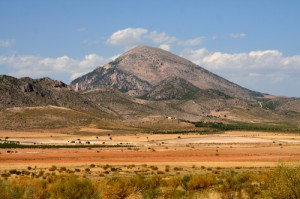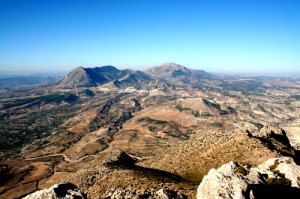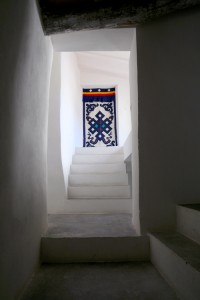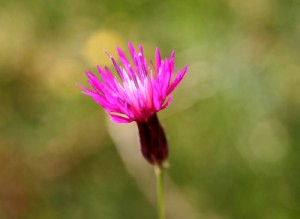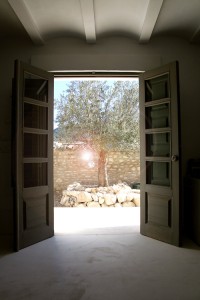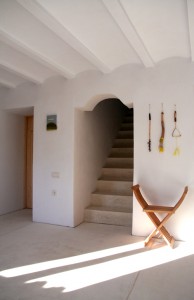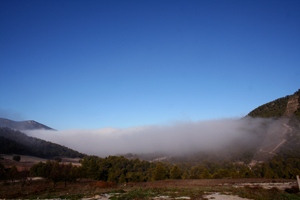November 30, 2008 at 11:00 am
· Filed under Creatures
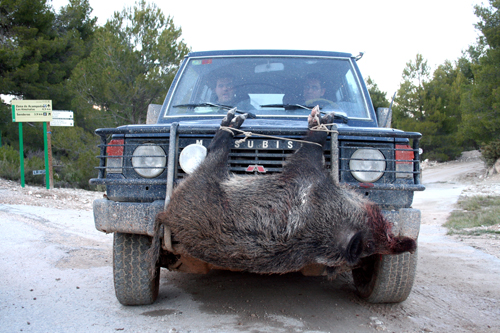
Yesterday was the first day of the boar season and the sierras were very busy with gun ‘totin’ hunters. One of them was Pedro, who is only normally seen up here when delivering water in August. He actually flagged us down to proudly show us his trophy.
What ensued was an intense explanation to the children as to why Pedro had killed it and that it was a free animal and that out of respect for the boar Pedro was going to eat all of it and not throw any away etc…
Pedro also promised me a piece of it, so I can guarantee some of it won’t go to waste.
Permalink
November 28, 2008 at 8:02 pm
· Filed under Environment
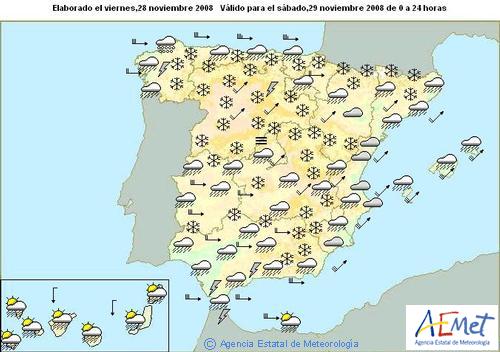
viva Espana.
Permalink
November 27, 2008 at 11:03 am
· Filed under Landscape
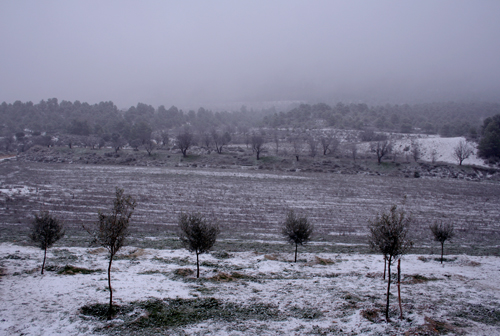
Here at Los Gazquez, at 1000 meters above sea level, snow is not uncommon. The fact that the road to school climbs up another 250 meters makes the chance of getting through rather slim. Couple that with the notion of being unable to get back again makes the trip just not worth the risk.
Our young olive grove in the foreground is unaffected thankfully.
Permalink
November 26, 2008 at 11:34 am
· Filed under Environment
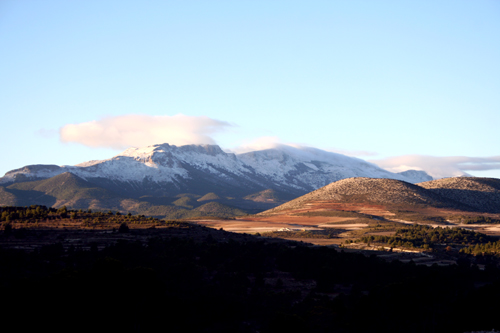
Here at Los Gazquez we like the cold, especially if the sun shines. This is the Sierra-Maria on the way to school this morning.
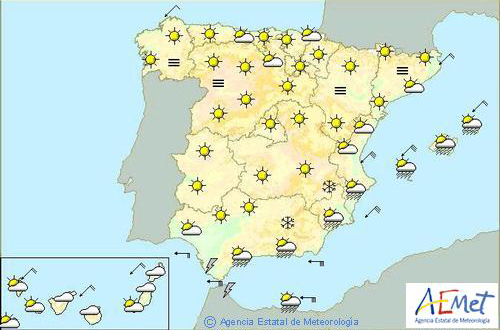
I’d better put another log on the fire.
Permalink
November 23, 2008 at 2:03 pm
· Filed under Sol and Sesame

There is a common anxiety amongst all parents, anywhere in the world, that their children’s native literacy will be suffering if you are living abroad. In our case, English is our first language but our children are learning Spanish at school. Well, let me assure you, as long as your child doesn’t suffer from any reading difficulties generally, the transition from Spanish to English and back again is easy.
How did we discover this? Well, our family has been in a prolonged state of transition over the past two and a half years, getting to be in our home where we are now, happily ensconced. Now 7, the children have worked hard at school and I would say that their vocabulary and general language skills are pretty even in both Spanish and English. And their reading and writing in Spanish is very good too. Whereas Daddy, in whatever situation, can only express himself in building terms, which can be confusing at the dentist. Anyway, settling in to their new bedrooms the other day, we unpacked a couple of boxes of their books which hadn’t seen the light of day since the children were four and a half. They fell upon them with great enthusiasm and joy at remembering the books, their titles and most importantly the illustrations. And lo and behold they just started reading, in English. We needed minor adjustments in order to aspirate H’s and TH’s, correction of G’s and J’s but beyond that they found it easy. Albeit in a Spanish accent.
So if you are in a similar situation and have those anxieties, don’t worry. Be attentive, but don’t worry about it. Now I particularily enjoy having Jeffery Fisher’s book ‘The Hair Scare’ (illustrated above) read to me in bed in the morning with my cup of coffee.
Permalink
November 17, 2008 at 5:49 pm
· Filed under Creatures, Family, Landscape
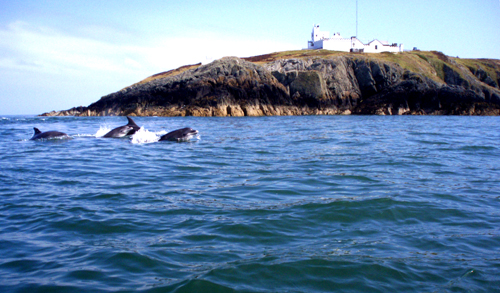
Don’t worry I’m not going mad. I just looked up the origin of the name dolphin. Hey, even the great Melville, debating whether a whale was a fish or a mammal, plumbed for a fish. I just wanted to see if ‘fish with a womb’ came up in the top ten search key phrases in my blog stats. It probably will.
These three dolphins were photographed by my brother’s postman whilst out water skiing. Damned talented chap I thought, until I realised he was in the back of the boat and not actually water skiing with a camera in one hand. And the reason I am in possession of this photograph is because Robin’s postman also caught a picture of Robin’s lighthouse in the background.
Point Lynus Lighthouse was built in 1835 with a tower of 11 meters. However the height of the light above mean high tide is 39 meters, it being built on a headland. It was electrified in 1951 and automated in 1989. Yes, sadly it’s true. My brother Robin isn’t a lighthouse keeper, more of a lighthouse owner, which just isn’t the same is it. It houses a 1000w bulb with an intensity of 112,000 candela and the lamps character is ‘white, occulting every 10 seconds’ and has a range of 40km or 20 nautical miles. It would take a rather large pv array to power that light bulb.
What is more, should you be interested, he has two pilot’s cottages within the castellated walls of the structure which are self catering holiday lets. If you want to see more look here. So if you like your rain horizontal and your fish and chips in wet newspaper drop me a line and I’ll introduce.
Permalink
November 16, 2008 at 11:19 am
· Filed under Landscape
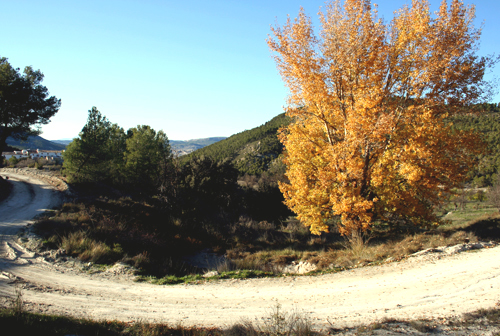
No, not the Texian war cry of the ‘Battle of San Jacinto’ avenging the fall of ‘The Alamo Mission’ to Mexican forces. But my cry to remember one of the most beautiful trees, Populus Alba, or, White Poplar (Alamo in Castillian). Native to Spain and Morrocco it’s silver and green summer leaves have turned to amber. And like amber, when the sun casts it’s light through it’s transparent body, it illuminates into gold.
Ancient mythology tells us that the White Poplar was consecrated by Hercules after his slaying of Cacus in the Aventine Hills which was covered in these ancient trees. Hercules reached up and took a branch to fashion into a wreath for his brow in celebration of his victory. Since this occasion all devotees of Hercules fashioned a poplar garland in celebration of vanquishing their enemies in battle.
I wonder if those wild frontiersmen in ‘hollerin’ “Remember the Alamo!” realised they were also evoking the power and authority of the son of Zeus?
Permalink
November 14, 2008 at 2:58 pm
· Filed under Environment
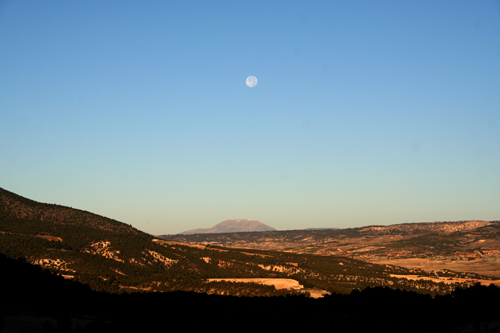
After a night of silvery light, sufficient to read by, dawn brings the sun and causes the moon to set above La Sagra.
Permalink
November 13, 2008 at 6:37 pm
· Filed under Environment
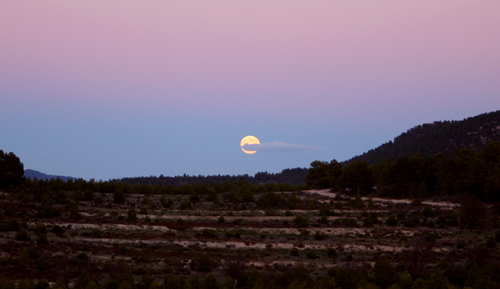
Although it takes only 27.322 days on average for the Moon to complete one orbit around the Earth (the sidereal month), as a result of the Earth’s orbital motion around the Sun it requires about two additional days for the Earth, Moon, and Sun to acquire the same relative geometry. So on average the number of days between two similar phases (e.g., between one full moon and the next full moon) is about 29.531 days. This period is referred to as a lunation, lunar month, or synodic month. The actual number of days in a lunation can vary from about 29.272 to 29.833 because the velocities of the Moon and of the Earth are not constant in their elliptic orbits, and because of gravitational interactions with other bodies in the solar system.
Because the month of February has only 28 days (or 29 in a leap year), there have been a few occasions during which this month has been without a full moon. In particular, there was no full moon in February of 1866, 1885, 1915, 1934, 1961 or 1999. There will be no full moon during February of 2008. In these years, there were instead either two full moons in January, March, or both (as in 1999). In the leap year of 1972, there was a full moon on February 29. The previous February 29 full moon occurred in 1820 and before that in 1752.
A full moon is often thought of as an event of a full night’s duration. This is somewhat misleading, as the Moon seen from Earth is continuously becoming larger or smaller (though much too slowly to notice with the naked eye). Its absolute maximum size occurs at the moment expansion has stopped, and when graphed, its tangent slope is zero. For any given location, about half of these absolute maximum full moons will be potentially visible, as the other half occur during the day, when the full moon is below the horizon. Many almanacs list full moons not just by date, but by their exact time as well (usually in GMT). Typical monthly calendars which include phases of the moon may be off by one day if intended for use in a different time zone.
The date and time of a specific full moon (assuming a circular orbit) can be calculated from the equation:

where D is the number of days since 1 January 2000 00:00:00 UTC, and N is an integer number of full moons, starting with 0 for the first full moon of the year 2000. The true time of a full moon may differ from this approximation by up to about 14.5 hours as a result of the non-circularity of the moon’s orbit. The age and apparent size of the full moon vary in a cycle of just under 14 synodic months, which has been referred to as a full moon cycle.
Full moons are generally a poor time to conduct astronomical observations, since the bright reflected sunlight from the moon overwhelms the dimmer light from stars.
I love Wikipedia
Permalink
November 10, 2008 at 10:09 am
· Filed under Environment
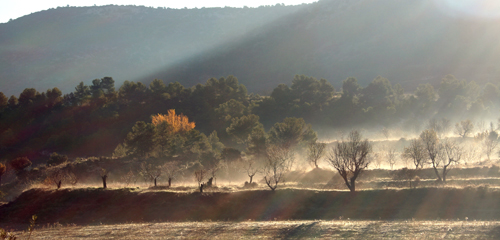
At this time of year the sun reaches the top of Pena Casenova in the Sierra Larga at about 9am, casting a beautiful light through the dewey mist in the almonds in front of Los Gazquez. I took this picture this morning. With a clear blue sky the day promises sunshine and warmth.
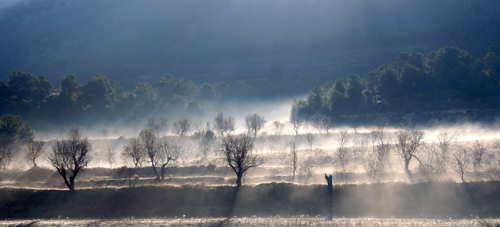
And yes, to any of you Hemingway fans out there, I did steal the title for my post from him. However, to be fair he stole it from Ecclesiastes 1-5. ‘The sun also ariseth, and the sun goeth down, and hesteth to the place where he arose’. Hemingway intended it as an epitaph to a lost generation after the first war. I see it more as an elergy to our solar panel. Never have I hated cloud cover so much as here. Thankfully it is extremely rare. Hemingway’s novel ultimately champions the self reliance and autonomy expressed in the bull fighter Pedro Romero. Virtues we at Los Gazquez admire too. Not the fighting of bulls, but the self reliance and autonomy. We know it is not always easily achieved.
Permalink



















